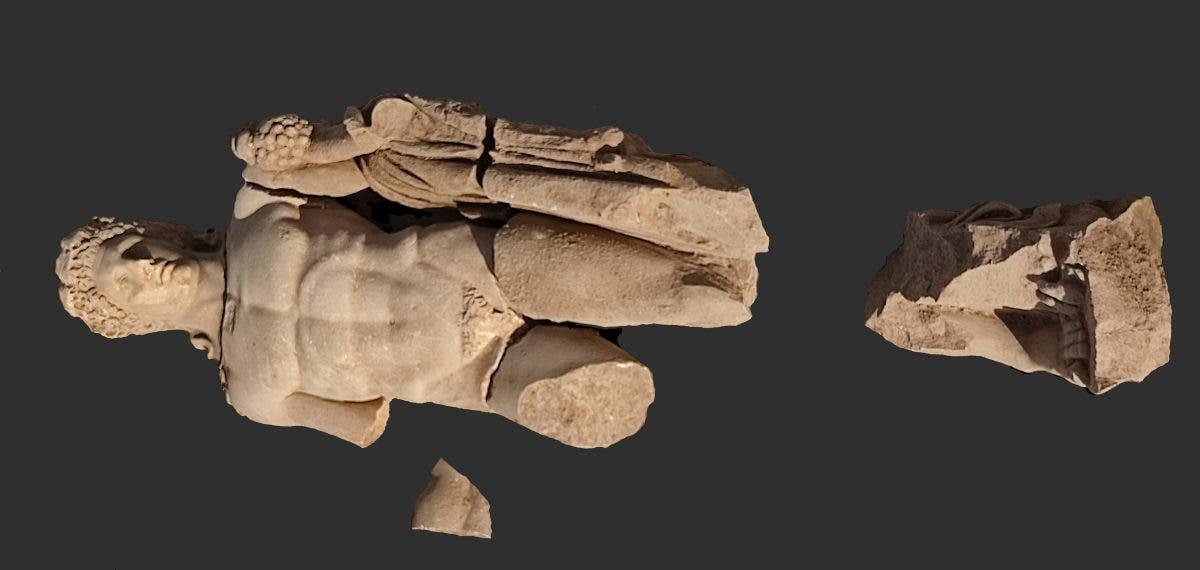A 2,000-year-old Roman statue of Hercules has been uncovered among the ruins of the ancient Greek city of Philippi, according to the country’s Ministry of Culture and Sports. Intriguingly, the statue predates the ruins themselves by several hundred years, indicating that Roman artifacts were used to decorate public buildings long after the empire had fallen.
Originally named after King Philip II of Macedon in the fourth century BCE, Philippi was once a major city in what is now the Eastern Macedonia and Thrace region of Greece. Later coming under Roman rule, Philippi was eventually abandoned in the 14th century when its Byzantine occupants were conquered by the Ottoman Empire.
Archaeologists discovered the statue while excavating a building overlooking a square in the ancient settlement, which is believed to have been constructed in the eighth or ninth century when Philippi was part of the Byzantine Empire. To be clear, the figure depicted in the statue is referred to by his Roman name Hercules, rather than his Greek name Heracles, because the artwork has been dated to Roman times.

The sculpture depicts a young Hercules holding the slain Nemean Lion. Image credit: YPPOA
The son of Zeus, Hercules famously completed the so-called 12 Labors as a punishment for killing his sons during a fit of insanity. The first of these apparently impossible challenges was to slay the Nemean Lion, which possessed a golden coat that was impervious to all arrows, spears, or swords. Not fussed, Hercules simply strangled the big cat to death and is often seen holding the animal’s pelt in paintings and sculptures.
Sure enough, the statue uncovered at Philippi depicts a young Hercules brandishing the defeated Nemean Lion in one hand and his famous club in the other, leaving no doubt as to the figure’s identity.
The statue was uncovered within a richly decorated public building which is most likely to have been a fountain. Built around 800 years after the creation of the sculpture and at least 300 years after the fall of Rome, the building and its adornments attest to the continued importance of ancient Roman artifacts during the Byzantine era.
Having been declared a UNESCO World Heritage Site in 2016, Philippi has undergone several rounds of excavation over the past few years, and further works are planned for 2023.
Source Link: Incredibly Well-Preserved 2,000-Year-Old Statue Of Hercules Discovered In Greek Ruins